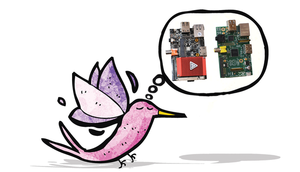HummingBoard Hack
The HummingBoard with its quad-core power, larger storage space, and faster interfaces is a strong competitor for the Raspberry Pi.

Lead Image © lineartestpilot, 123RF.com
The HummingBoard with its quad-core power, larger storage space, and faster interfaces is a strong competitor for the Raspberry Pi.
The Israeli manufacturer SolidRun has introduced the HummingBoard single-board computer (SBC), and the specifications are impressive. The HummingBoard ventures into performance levels that were previously closed to all but x86 processors. Compared with the Raspberry Pi, the HummingBoard has a much faster CPU, more storage, and a faster network interface. The HummingBoard also comes with throughput interfaces such as SATA and PCIe. Table 1 compares the HummingBoard with a Model B+ Raspberry Pi.
As with the Rasp Pi, the HummingBoard family includes several models. However, the instruction set architecture for the HummingBoard is not limited to the ARMv6. The built-in Freescale i.MX6 system on chip (SoC) contains up to four ARM Cortex A9 processor cores that implement the ARMv7 instruction set architecture. The really big advantage is that armhf binary packets from Debian and its derivatives can be used directly. This is similarly true for other distributions. In light of these positives, the comparatively greater power consumption of the HummingBoard that occurs in many application sectors does not make a difference.
The HummingBoard does not yet offer a well-established community like the one that has arisen around the Raspberry Pi. The Raspberry Pi offers well-documented interfaces, numerous compatible peripheral devices, and a future-proof software ecosystem. In this article, I will address the extent to which the features of the HummingBoard family can compensate for its shortfalls in these areas.
[...]
Pages: 6
Price $15.99
(incl. VAT)